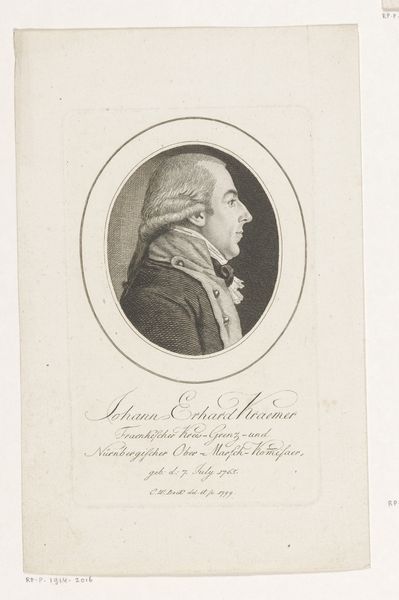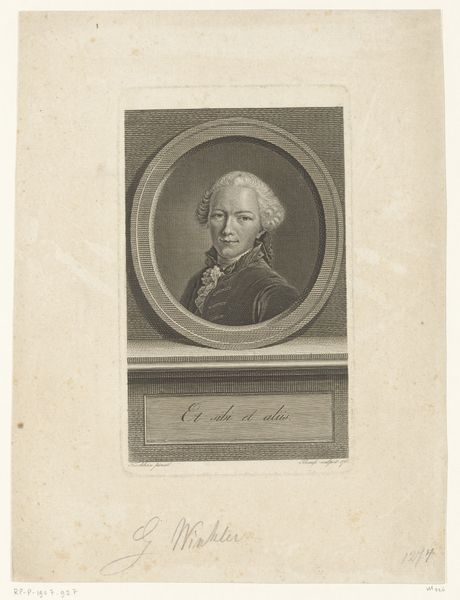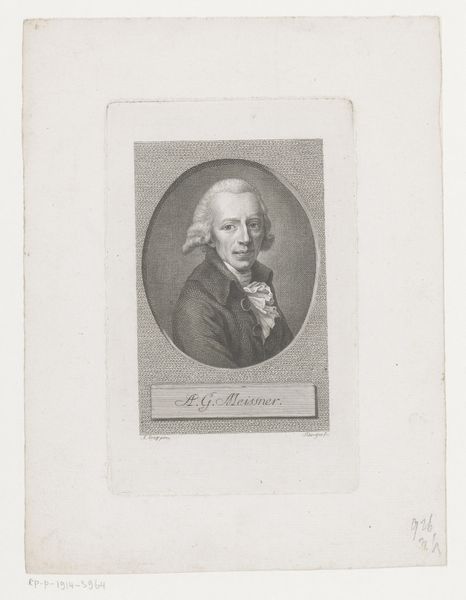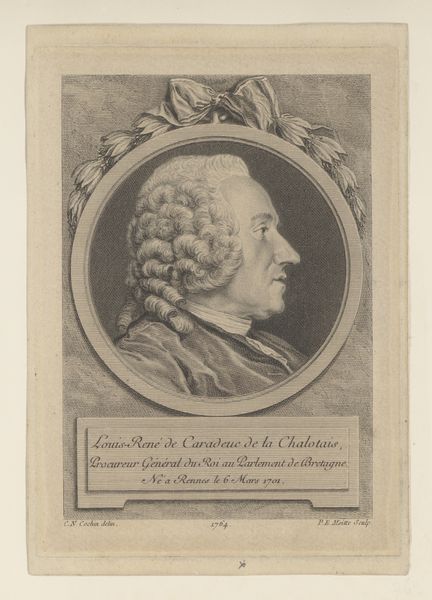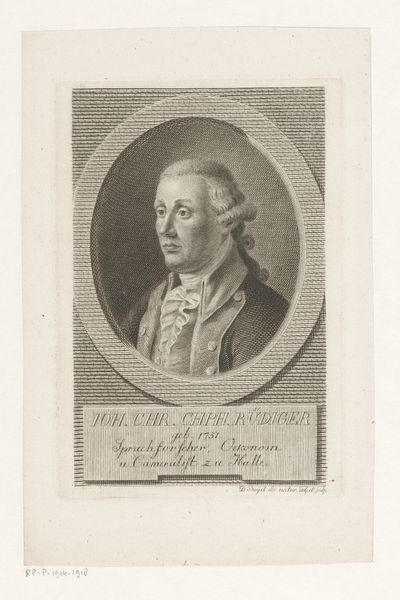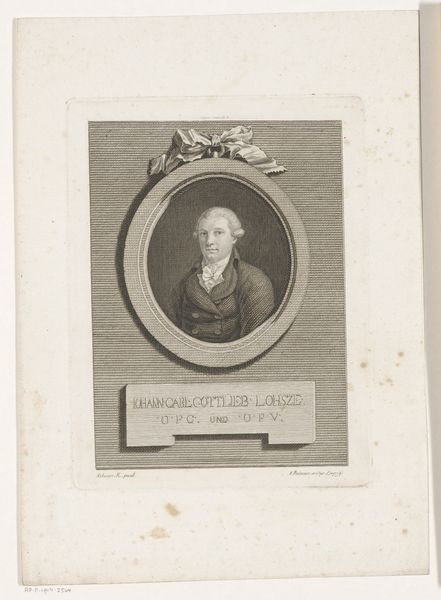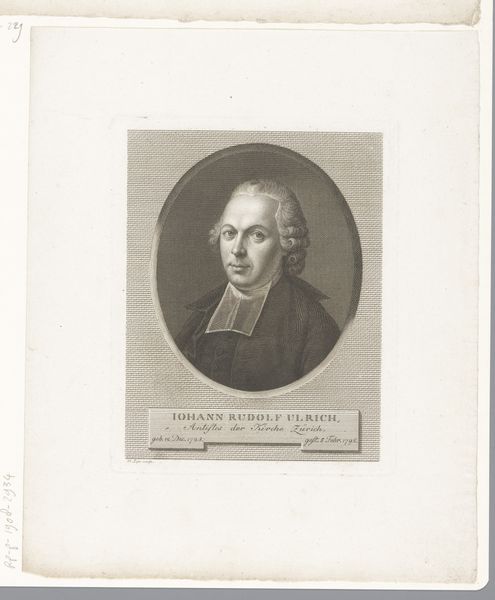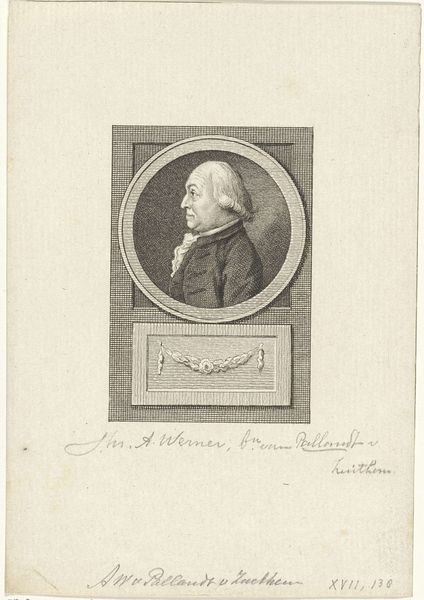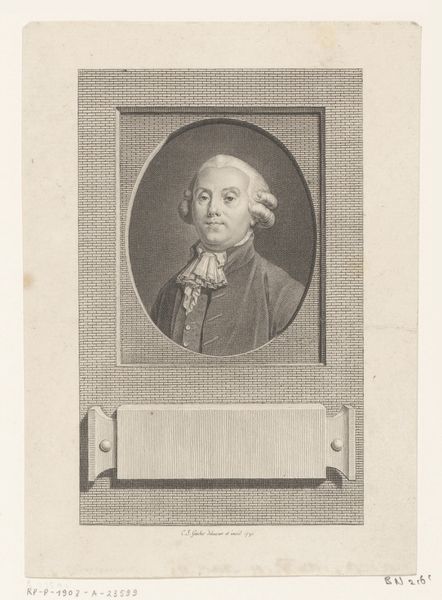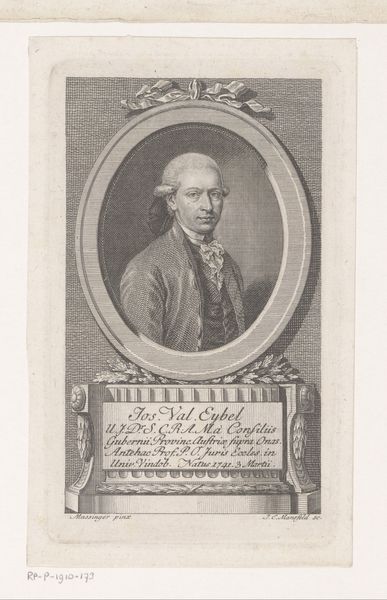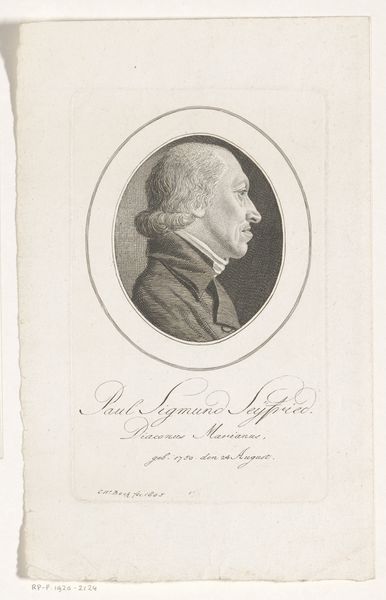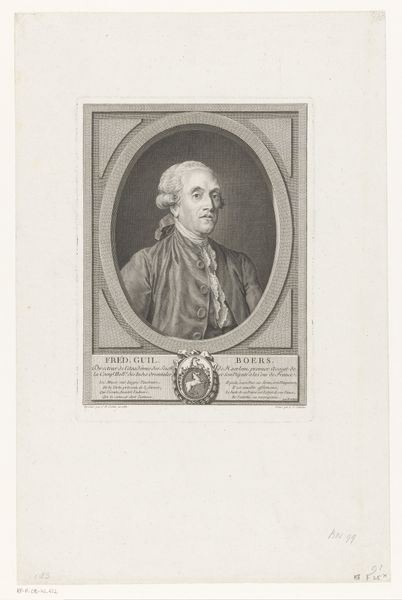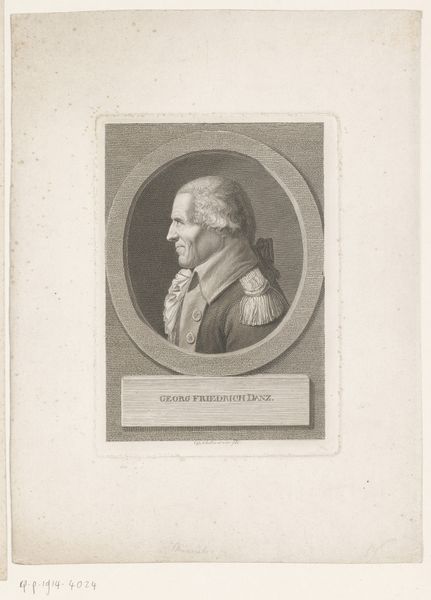
print, paper, engraving
#
portrait
#
neoclacissism
# print
#
old engraving style
#
paper
#
engraving
Dimensions: height 150 mm, width 110 mm
Copyright: Rijks Museum: Open Domain
Editor: This is a print of Heinrich Simon van Alpen, dating from around 1801 to 1810, by Johann Carl Bock. It's made using engraving on paper and is part of the Rijksmuseum collection. It has an almost haunting quality with its stark monochrome palette. How do you interpret the stark contrast in this piece, and what impact does that contrast have? Curator: The contrast serves primarily to define the form within the oval frame. Note the artist's reliance on line to delineate shape, particularly around the jaw and the wig. The subtle gradations achieved through varying line weight are critical in establishing the three-dimensionality of the portrait, are they not? Observe how the varying density of lines defines not only the shape but also contributes to a sense of depth, drawing the eye to specific features. Editor: That's a great observation. What do you mean by "shape" in the neck area and do you think it has another intent? Curator: The "shape," there is structured and classical, consistent with Neoclassical ideals. What is more, notice the meticulous rendering of the collar and jacket. These elements are integral to the overall visual composition and play a crucial role in how the work is read. Does that then influence its intended meaning and reception? The line becomes a powerful tool, not just for description, but also for formal expression. Editor: This analysis has really opened my eyes to how much can be conveyed simply through line and tonal variation. I initially missed the level of refinement in such a seemingly simple print. Curator: Indeed. The artist masterfully employs the technical constraints of the engraving medium to produce a sophisticated and formally compelling work of art.
Comments
No comments
Be the first to comment and join the conversation on the ultimate creative platform.
